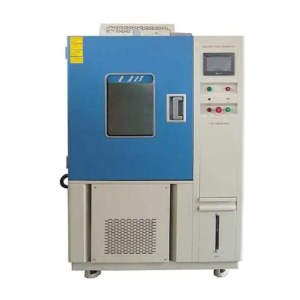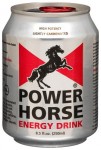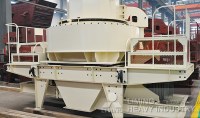Rain Test Chamber
LIB provides a large selection of water spray chambers to test the IPX1, X2, IPX3, IPX4, IPX4, IPX5, IPX6, IPX7 IPX8, IPX6K and IPX9K protection degree against rain and sprays according to IEC 60529, MIL-STD 810 and other international standards.
Calibration and Accuracy of rain test machine
Calibration and accuracy are crucial aspects of rain test chamber to ensure reliable and repeatable test results. Calibration involves verifying and adjusting the performance of the chamber to align with established standards and specifications. Precise calibration is necessary to ensure that the rain test chamber accurately simulates real-world weather conditions.
To maintain accuracy, rain test chambers typically undergo regular calibration checks using traceable reference devices, such as calibrated rain gauges or flow meters. These devices measure the water flow rate and intensity within the chamber, which can be compared against the desired test parameters.
The calibration process includes adjusting factors such as water flow rate, drop size, and distribution patterns to ensure consistency and accuracy. Additionally, the chamber's sensors, control systems, and data acquisition equipment should also be periodically calibrated to ensure their accuracy in measuring and recording test parameters.
Regular maintenance, cleaning, and calibration of the rain test chamber are essential to ensure accurate and reliable test results. Adhering to calibration procedures and good laboratory practices helps to minimize errors and uncertainties in rain testing, providing confidence in the results obtained from rain test chambers.
Troubleshooting of Rain Test Chambers
1. Sensor Calibration: If the test results are inconsistent or erratic, check the calibration of the chamber's sensors, such as rain intensity or drop size sensors. Recalibrate or replace them if necessary.
2. Water Supply Issues: Inspect the water supply system, including hoses, valves, and filters. Ensure there are no blockages or leaks that may affect the water flow rate or distribution.
3. Control System Check: Verify the settings and programming of the chamber's control system. Ensure that the selected test parameters, such as rain intensity or duration, are properly configured.
4. Leakage Detection: If water is leaking from the chamber or seeping into unwanted areas, carefully inspect the chamber's seals, gaskets, and doors. Replace any damaged or worn components to prevent water leakage.
5. Electrical Connections: Check all electrical connections, including power supply, cables, and connectors, to ensure they are secure and properly grounded. Loose or faulty connections can cause erratic behavior or system failures.
6. Software or Programming Errors: If the rain test chamber is controlled through software, check for any errors or glitches in the programming. Update or reinstall the software if needed to address any issues.
7. Safety Features: If any safety features, such as emergency stop buttons or safety interlocks, are not functioning correctly, troubleshoot the system to ensure the operator's safety during testing.
8. User Manual and Technical Support: Consult the user manual provided by the manufacturer for troubleshooting guidance. If needed, reach out to the manufacturer's technical support team for assistance with more complex issues.
Comparison of Rain Test Chambers with Other Environmental Test Chambers
Rain test chambers are specific types of environmental test chambers designed to simulate rain conditions for testing purposes. Here is a comparison of rain test chambers with other environmental test chambers:
1. Temperature Chambers: Temperature chambers primarily focus on testing the effect of varying temperatures on a product. While they can simulate humidity as well, they do not typically include rain simulation capabilities.
2. Humidity Chambers: Humidity chambers focus on creating controlled humidity levels for testing. Although some humidity chambers can generate water droplets, they often lack the precise rain simulation capabilities of dedicated rain test chambers.
3. Dust Chambers: Dust chambers are designed to simulate dusty or sandy environments. While they may spritz water to create crude rain-like conditions, they do not provide the precise rain characteristics and control found in rain test chambers.
4. Salt Spray Chambers: Salt spray chambers primarily evaluate a product's resistance to corrosion by creating a salt-laden environment. They do not simulate rainfall or the specific characteristics associated with rain testing.
5. Combined Chambers: Some environmental test chambers provide versatility by combining rain simulation capabilities with other environmental factors like temperature, humidity, or dust. These chambers offer comprehensive testing options for products exposed to multiple environmental conditions.
In summary, rain test chambers offer specialized rain simulation capabilities that are not found in other environmental test chambers. They allow for precise control and accurate reproduction of rain conditions, making them ideal for testing products' resistance to moisture and water ingress.
For more information about environmental stress chamber and rain test chamber specification, please feel free to contact us!
Personne à contacter : LIB LIB, 029 68918976
Bonne affaire : acheter au vendeur
Nous vous invitons à lire nos conditions générales d'utilisations. Vous pouvez aussi vous rendre sur nos FAQ et consulter notre page d'informations sur les risques liés à la contrefaçon.
|
Cette page concerne les importateurs et exportateurs de Rain Test Chamber Rechercher dans la catégorie : Habillement Enfant Rechercher dans la catégorie : chamber, test, rain |
Mardi 25 mars 2014
Quantité : 50 - Prix : 3,50 €
OPPORTUNITE A SAISIR !!!!! OUTRE MERS Nouvel arrivage 2014 Voici la selection 2014 des pareos viscose OUTRE MERS 2 modèles imprimés rasta 2 modèles imprimé fleur d'hibiscus ( violet, rose ) 7 modèles motif tie dye ( bleu, vert, multicolore, chocolat, noir, rose, violet ) 9 modèles unis ( blanc...)
OUTRE MERS
- outremers
- 17110 - SAINT GEORGES DE DIDONNE
- +33 6 81 16 68 53
Samedi 18 avril 2015
Quantité : 100000 - Prix : 200 per pallet
Boisson d'énergie de Power Horse Avec autant de produits actuels (dont la performance est peu plus qu'une réclamationfondée sur hype) laissant les consommateurs se sentant trahis, c'est le symbole ducheval a représenté puissance et la force du monde au cours des siècles et constitue...
Beverages Supplies Inc
- 00237 - Limbe
- +237661757711
Mercredi 06 août 2014
Type: Concassage tertiaire Taille d'alimentation: 0 –50 mm Matériel à traiter: minerai de fer, minerai de cuivre, minerai d'or, minerai de manganèse, minerai de zinc, gravier de rivière, gravier, calcaire,gangue de charbon, quartz,basalte. Applications: béton bitumineux, sable...
Henan Liming Heavy Industry Science & Technology Co.
- 75001 - paris
- 08 63 72 12 34
Paiement sécurisé








